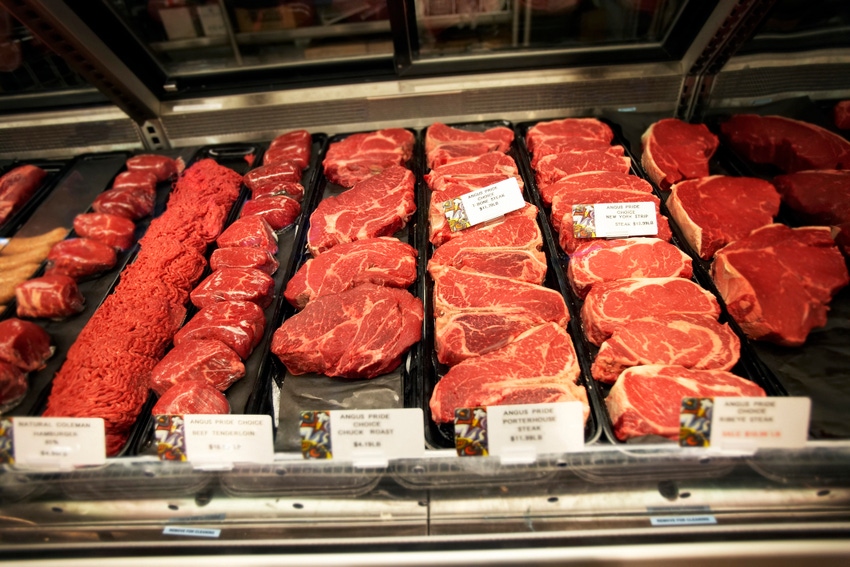Retail beef prices stay strong despite large meat supplies
Retail pork prices lower than last year, broiler prices unchanged.

While lower beef prices would be expected due to the massive amounts of meat the U.S is producing and needing to move, this has not actually been the case this year. According to Derrell Peel, Oklahoma State University Extension livestock marketing specialist, November Choice retail beef prices were $5.911/lb., up from $5.840/lb. in October and 1.8% above the November 2017 price of $5807/lb. However, the all-fresh beef retail price has dropped to $5.603/lb. from the October price of $5.683/lb., Peel said, adding that the all-fresh price was also down 0.5% from the November 2017 price of $5.629/lb. Still, for the year to date, Peel said the Choice and all-fresh retail beef prices have averaged 0.2 and 0.7% above last year for the same period.
On the pork side, Peel relayed that retail pork prices dropped in November to $3.701/lb. from the October level of $3.727/lb. and were down 2.2% from the November price of $3.786/lb. price one year ago. So far this year retail pork prices are down 1.1% year over year.
Broiler prices have also been lower, Peel said, with the retail broiler composite price in November at $1.853/lb. down from $1.889/lb. in October and down 1.0% from the November 2017 price of $1.871/lb. For the year to date, retail broiler prices are unchanged from last year.
“Retail beef prices have remained strong despite increased supplies of beef and other meats. The ratio of retail beef price to broilers and to pork has averaged slightly higher in 2018 compared to 2017,” Peel noted.
Retail meat prices do not capture prices for food eaten away from home, however, he said.
According to the U.S. Department of Agriculture (USDA), 53.8% of total food expenditures in 2017 were for food away from home, up from 50.9% just five years earlier in 2012. Over the period from 2012 to 2017, at home food expenditures increased 12.2% while expenditures for food away from home increased by 26.1%.
The fastest growing segment of at home food expenditures was in the category that includes farmer’s markets followed by mail order and home delivery, Peel noted. Farmer’s markets represented 0.8% of at home food expenditures in 2017 while the mail order/home delivery category accounted for 3.0% of total at home food expenditures. Most major away from home food categories showed growth over 25% since 2012. This includes food expenditures at full and limited service restaurants, hotels, drinking establishments, and recreational places, Peel said.
About the Author(s)
You May Also Like




